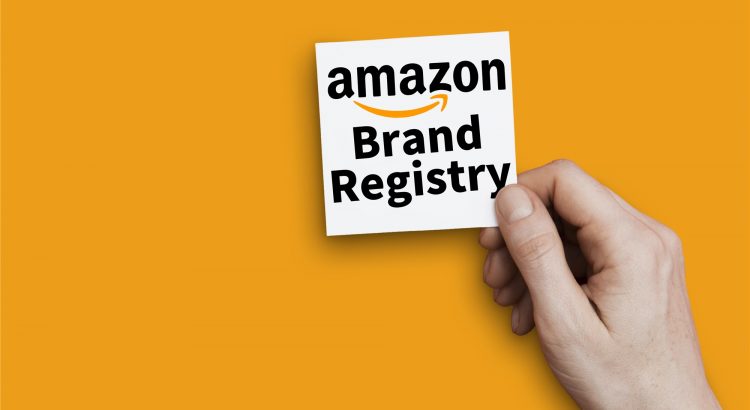Amazon Brand Registry: How IT Works (Benefits+Requirement for the enrollment)

Are you having difficulties in registering your brand? Is it always complex and misunderstood? Well, in this article all these questions will be answered and also in this article, you will know the benefits, difficulties and requirements of the Amazon brand registry. All you have to do is read on.
As a brand owner who sells on Amazon, you know that protecting your brand can be a full-time job. But most brand owners are often scared or rather they act reluctant to sell their products on Amazon because they do not want to tarnish their reputation caused by unprincipled sellers.
But do you know that someone else can help you sell your brand on Amazon? Sounds amazing right? Presently, it will be difficult to close every route that can lead your products being sold on Amazon.
Due to this fact, that is why I strongly recommend that you enroll your products in Amazon brand registry. So that you can be able to protect your products from counterfeiters, and also to have control of the brand experience customers have on the world’s most popular e-commerce site.
● Meaning of Amazon brand Registry
● Why did Amazon introduce Brand Registry?
● Requirements for the enrollment of Amazon Brand Registry
● How to sign up to Amazon brand Registry
● Benefits of Amazon brand Registry
● Most asked questions on the Amazon brand registry and their answers
Meaning of Amazon brand Registry

Amazon Brand Registry is a program that enables brand owners to protect their products on Amazon and also it distinguish brand owners from Amazon.
Brand Registry has a dedicated team that brand owners can contact to report intellectual property infringement, policy violations, listing issues and technical issues, and also escalate previously submitted cases.
Brand Registry also gives brand owners access to additional marketing programs, including Enhanced Brand Content, and Amazon Storefronts.
Why did Amazon introduce Brand Registry?
Amazon has faced several lawsuits from brands claiming not enough was being done to prevent counterfeit products being sold, along with other intellectual property (IP) violations.
It seems that the Brand Registry was introduced to help stem the flow of counterfeit and IP infringement issues on the site. It also moves some of the burdens of policing violations from Amazon onto brand owners.
Because Brand Registry identifies brand owners and their authorized resellers, it also makes it easier for Amazon to begin enforcing its Standards for Brands Selling in the Amazon Store. Under this new policy, Amazon is telling brands that they can no longer sell directly to customers through the Amazon Marketplace. Instead, their only option is to sell items directly to Amazon Retail as a vendor.
Requirements for the enrollment of Amazon Brand Registry
The exact requirements differ by country, but all require that you have:
● An active, registered trademark in that country that appears on your product or packaging.
● The ability to verify yourself as the rights owner, through the public contact listed on your trademark registration.
● An Amazon account (either Seller Central or Vendor Central).
● The trademark must be a text-based mark or an image-based mark that contains text. A purely graphical mark like the famous Nike “Swoosh”, for example, will not be accepted.
How to sign up to Amazon brand Registry
Visit Amazon to start the Brand Registry enrollment process.
(https://brandservices.amazon.com/)
After clicking the button to enroll, you will be asked to choose which one of 12 countries you wish to enroll in. You will then be redirected to the localized Amazon website for that country. This can be the U.S., Canada, Mexico, Brazil, the U.K., Germany, France, Italy, Spain, Australia, India or Japan. There is no option to choose China or Turkey.
To enroll in Brand Registry you’ll need to have:
A live registered trademark that matches the brand name printed on products and/or packaging.
You'll also need to provide:
1. Images of the brand’s logo.
2. Images of products and packaging that carry the trademarked brand name. If the product itself is not branded, the packaging must be branded.
3. A list of product categories (e.g., apparel, sporting goods, electronics) in which the brand should be listed.
4. A list of countries where the brand’s products are manufactured and distributed.
Note: if you were enrolled in the old Brand Registry 1.0, that program is now defunct, and you will not be automatically transferred to Brand Registry 2.0. You need to reapply, following the instructions above.

Benefits of Amazon brand Registry
Brand Registry 2.0 has a lot of features for brand owners, which you can see listed under What changed with Brand Registry 2.0. above.
Those features help to:
— Stop competitors from changing listing content to hijack or sabotage your listings.
— Make it easier to find and report IP infringement.
— Make it easier to retract incorrect IP infringement claims.
— Fix listing issues more quickly, via a dedicated team with more focused training than the Seller Support or Catalog teams.
— Showcase your brand on Amazon using Enhanced Brand Content and Amazon Storefront.
— It’s a relatively comprehensive program for brand management on Amazon.
Below are some of the most asked questions on the Amazon brand registry and their answers.
1. How can I find out if a product is enrolled in Brand Registry?
There isn’t a publicly available database of brands registered with Amazon.
However, one way to tell is that if a product detail page has Enhanced Brand Content (EBC), then it is in the Brand Registry. EBC provides richer product descriptions with more images and sophisticated layouts and formatting. However, EBC is an optional feature, so if a product detail page doesn’t have EBC it doesn’t mean it isn’t enrolled in the registry.
You can ask the right’s owner if a product is enrolled if that’s possible for you.
2. Can I sell products from brands in Brand Registry?
Yes, you can. Brand Registry does not prevent sellers from offering products of that brand. Brand Registry protects the listing content, but it doesn’t restrict sellers from selling the product.
There is, however, a separate program of brand gating which does restrict who can sell the brand. It enforces an application process that can require supplier invoices, an authorization letter and a substantial fee.
Also, Amazon may ask for evidence that the products you sell are authentic, such as supplier invoices. This may also restrict your ability to sell the product if you do not have invoices that meet Amazon’s strict criteria. Although this is connected with the product authenticity, it is not a result of a brand being enrolled in Brand Registry.
3. Is it worth enrolling in Brand Registry?
If you’re a brand owner that qualifies for Brand Registry, I highly recommend that you sign up for it and utilize its tools.
Amazon is giving you the opportunity to control your product listings, enforce your intellectual property rights, and access additional marketing tools.
Use it to your advantage, but don’t abuse the opportunity. Make sure any claims you submit are legitimate, or you may find your access to those tools revoked, or worse, your account suspended.
About Tool4seller
A best-in-class Amazon seller tool that is specialized in sales& profits analytics, PPC optimization, keyword research, competitor tracking, instant alerts for listing hijacking, price changing, and inventory updates, etc.



